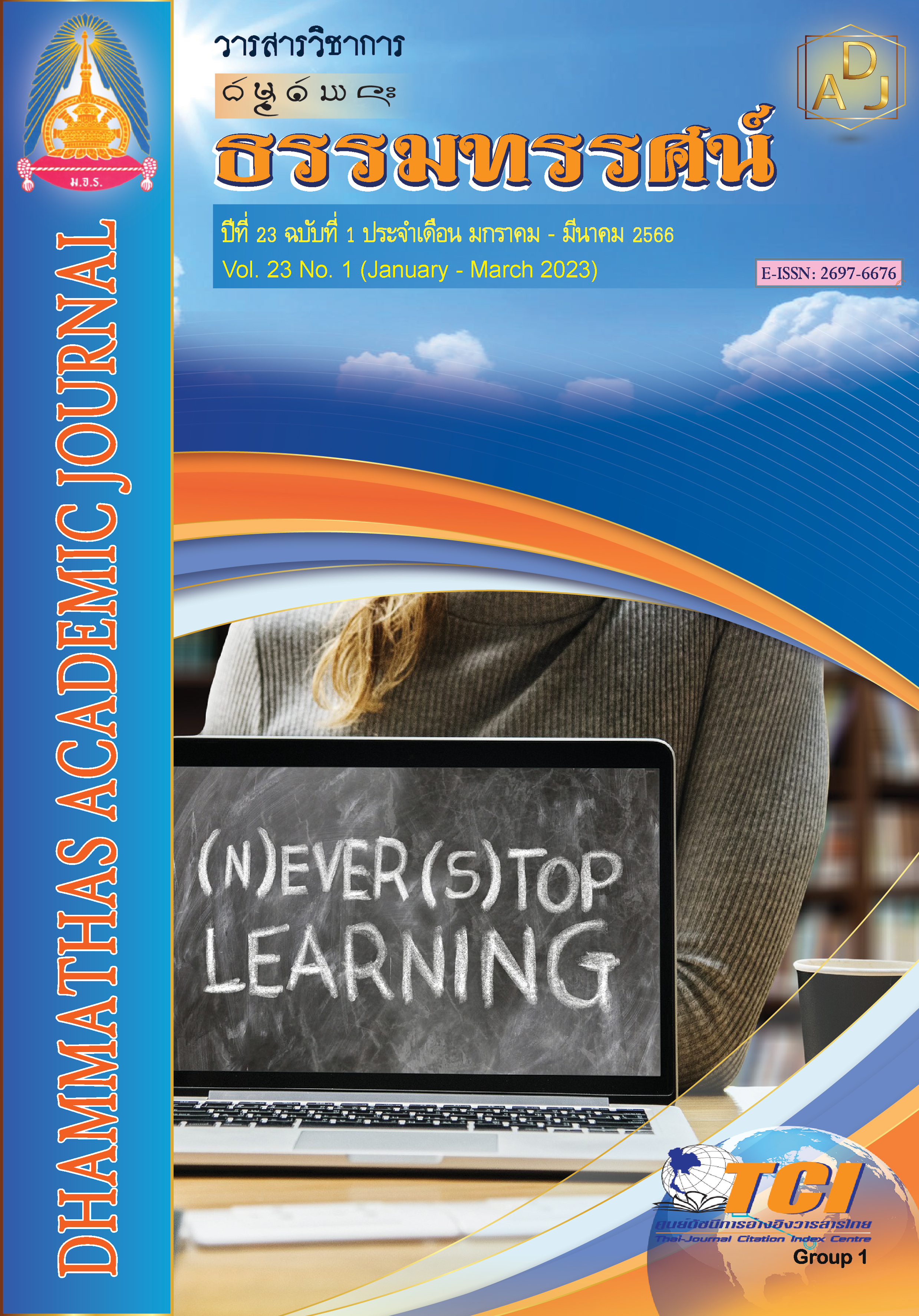Analysis of image of politicians today and the acceptance of the people in Chaiyaphum Province
Main Article Content
Abstract
The objectives of this research were to study the current image, the factors of acceptance and analyze the guidelines for creating of a good politician’s image according to Buddhist principles. This research was mixed method research: qualitative and quantitative researches by study from related documents and In-depth interviews 35 key informants. Data were analyzed by inductive method. For quantitative research, data were collected from 400 samples by using of a questionnaire and analyzed by descriptive statistics.
The results showed that:
1. The image of a politician must have 1) morality and ethics, i.e. must have a good behavior and Family members should also have an unblemished history; 2) human relations, i.e. should be a native people and able to communicate and understand local customs and culture at well; 3) Highly educated, i.e. able to be depended on be an agent in bringing prosperity to the community.
2. The factors of public acceptance of politicians were 1) Motivation which arising from acceptance or admiration of politicians, have a visiting and conversation with the people in local language 2) Background of politicians who used to be politicians or former senior government officials. 3) Political attitude which accepts more individuals than political parties.
3. Guidelines for creating a good politician's image according to Buddhist principles consist of 1) Motivation, having secular principles, namely (1) Caga: giving and sacrifice (2) Tama: self-training, self-restraint, and control own emotions 2) Background of politicians, there are secular principles, namely (1) truthfulness and (2) virtue as a guideline for practice with honesty, honesty, speaking the truth, doing the truth and reject inaccuracy; 3) Political attitudes There are secular principles: (1) having patience: patience in fighting hardships in order to create good deeds in good faith, and (2) having faith in making good deeds manifest tolerant of criticism and will always practice.
Article Details

This work is licensed under a Creative Commons Attribution-NonCommercial-NoDerivatives 4.0 International License.
เพื่อให้เป็นไปตามกฎหมายลิขสิทธิ์ ผู้นิพนธ์ทุกท่านต้องลงลายมือชื่อในแบบฟอร์มใบมอบลิขสิทธิ์บทความ ให้แก่วารสารฯ พร้อมกับบทความต้นฉบับที่ได้แก้ไขครั้งสุดท้าย นอกจากนี้ ผู้นิพนธ์ทุกท่านต้องยืนยันว่าบทความ ต้นฉบับที่ส่งมาตีพิมพ์นั้น ได้ส่งมาตีพิมพ์เฉพาะในวารสาร วิชาการธรรม ทรรศน์ เพียงแห่งเดียวเท่านั้น หากมีการใช้ ภาพหรือตารางของผู้นิพนธ์อื่นที่ปรากฏในสิ่งตีพิมพ์อื่นมาแล้ว ผู้นิพนธ์ต้องขออนุญาตเจ้าของลิขสิทธิ์ก่อน พร้อมทั้ง แสดงหนังสือที่ได้รับการยินยอมต่อบรรณาธิการ ก่อนที่บทความจะได้รับการตีพิมพ์References
เกรียงศักดิ์ เจริญวงศ์ศักดิ์. (2539). แนวคิดการปฏิรูปการศึกษาไทย. กรุงเทพฯ: เอเชียเพรซ.
เกรียงศักดิ์ โลหะชาละ. (2533). การสร้างภาพลักษณ์. กรุงเทพฯ: มหาวิทยาลัยธรรมศาสตร์.
ใจทิพย์ ศรีประกายเพ็ชร. (2537). การศึกษากลยุทธ์การประชาสัมพันธ์และประสิทธิผลการสร้างภาพลักษณ์ของโครงการดาวเทียมไทยคม. (วิทยานิพนธ์นิเทศศาสตรมหาบัณฑิต). กรุงเทพฯ: จุฬาลงกรณ์มหาวิทยาลัย.
ธนัชชา ตรีรัตน์. (2559). นักการเมืองกับแบบแผนการนำเสนอและปกป้องภาพลักษณ์ผ่านหนังสือพ็อกเก็ทบุ๊ค ประเภทอัต/ชีวประวัติ. (การค้นคว้าอิสระรัฐศาสตรมหาบัณฑิต). กรุงเทพฯ: มหาวิทยาลัยธรรมศาสตร์.
พรทิพย์ พิมลสินธุ์. (2540). ภาพพจน์นั้นสำคัญยิ่ง: การประชาสัมพันธ์กับภาพพจน์. (พิมพ์ครั้งที่ 4). กรุงเทพฯ: ประกายพรึก.
พีระศักดิ์ หินเมืองเก่า. (2537). การมีส่วนร่วมทางการเมืองของกำนันผู้ใหญ่บ้าน: ศึกษาเฉพาะกรณีอำเภอยางชุมน้อย จังหวัดศรีสะเกษ. (รายงานการวิจัย). กรุงเทพฯ: มหาวิทยาลัยรามคำแหง.
ลิขิต ธีรเวคิน. (2543). การเมืองการปกครองของไทย. กรุงเทพฯ: มหาวิทยาลัยธรรมศาสตร์.
สุวัฒน์ ทองธนากุล. (2548). ภาพลักษณ์นักการเมือง. เข้าถึงได้จาก https://mgronline.com/daily/detail/9480000071269
อริสา เหล่าวิชยา. (2556). ภาพลักษณ์นักการเมือง. วารสารนักบริหาร, 33(2), 57-62.
Yamane, T. (1967). Elementary sampling theory. New Jersey: Prentice-Hall, Inc.

